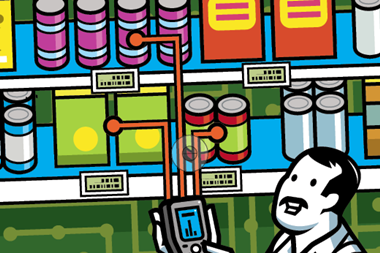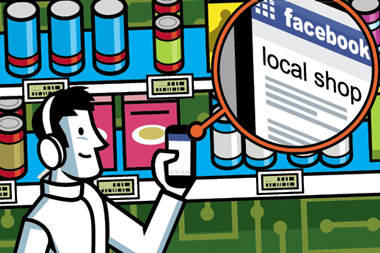Convenience retailers are some of the hardest workers in the UK, but putting in the hours doesn’t always guarantee results. These days it’s all about working smarter, not harder. And how do you do that? With technology. Whether it’s money-saving smart meters or time-saving epos, sales-boosting social media solutions or clever chillers, technology has the potential to transform your business.
Here Convenience Store looks at the technologies available to the sector and speaks to the retailers who use them. It’s time to take your business to another level.
Energy-saving
Energy bills are one of a retailer’s biggest outgoings, and costs only look like heading upwards for the foreseeable future. Consumer demand for chilled goods and well-lit and comfortable stores with lots of additional services requires energy-hungry equipment, so the need to keep usage in check has never been so great. Fortunately, recent key technological developments mean retailers can reduce their consumption and keep those spiralling bills in check
Smart savings

Before consumption can be reduced you need to be clear how much energy you are using, and where you’re using it. That’s where smart meters come in. A smart meter provides real-time information so you can monitor usage over specific periods, allowing you to identify and change energy practices and measure subsequent improvements.
Having a smart meter installed also means you can wave goodbye to estimated bills, and only ever pay for the energy you’ve used. For more information on smart meters visit the Energy Savings Trust’s website, www.energysavingtrust.org.uk/Electricity/Smart-meters.
Lighten up

With lighting making up about 25% of the average c-store’s energy consumption, this is a good place to start when looking at saving energy.
Light-emitting diodes (LEDs) are one solution, and lighting company Philips claims to have created a prototype tube lighting LED which is twice as efficient as those currently in use, but which offers the same amount of light. Not bad when you consider that LEDs, such as those in use at Londis retailer Dee Sedani’s stores in Etwall and Matlock, Derby, already use 65% less energy than his previous 70W Baro bulbs.
1942
The first CCTV security system was used in Germany
1961
UHT (Ultra High Temperature) process was invented to preserve the life of liquids including milk
1967
The first cash machine was installed in Enfield, Essex. It used hole-punched vouchers bought for £10 at the bank instead of plastic cards
1974
The first microprocessor-controlled cash machine was built for McDonald’s Restaurants
In addition to being incredibly energy efficient, LEDs have a longer life span than traditional incandescent bulbs and compact fluorescent lamps. These tend to run for about 15,000 hours, compared with LEDs which can last for up to 100,000 hours. So even though LEDs cost more, running and maintenance bills are lower.
And unlike more traditional bulbs, LEDs produce no heat, keeping the shop floor cooler and preventing air-conditioning units and chillers from having to work as hard, again cutting costs.
Compared with a halogen-based lighting grid, conversion to LED pays back comfortably within two years, according to Dee, taking into account capital costs, running costs today, and predicted running costs in the future.
With energy savings of about 65%, Dee calculates that a £3,500 investment in LEDs for a typical store will pay back in 63 weeks.
Take control
Controlling when your lighting goes on and off can make a world of difference to costs. There are three key types of lighting control. Occupancy sensors, which switch off lights when a space isn’t being used, can reduce lighting costs by up to 30%. Then there are daylight sensors, which switch off or dim artificial lighting when there’s sufficient daylight. They’re particularly useful for exterior lighting, and can pay back their costs within a year, according to energy efficiency firm Ecomonitor.
Lastly come timing controls, which synchronize lighting to a store’s business pattern and opening hours.
Smooth those spikes

Electricity supply in the UK is now harmonised with Europe at 230 volts with a permitted tolerance of +/- 10%. This allows for electricity supplied from the grid to be in the range of 207-253 volts when it reaches your store. As most UK equipment is designed to operate efficiently at 220 volts, you can often be using far more energy than you need to run your equipment.
Changes in voltage levels can also induce spikes in supply, harming electrical equipment such as lamps, CCTV systems and computers.
The recommended solution is to install voltage optimisation equipment. This reduces the incoming voltage level to close to the 220 volt optimum level, which can reduce energy consumption by up to 20%, says Ecomonitor director Brian O’Hagan.
Ecomonitor has just installed its new voltage optimisation and energy management software eco-system360 in Budgens retailer Andrew Thornton’s London store, leading to energy savings of 10% at sub three-year payback levels.
Prices depend on the size of eco-system360 unit that you will need, but typically start from £3,400 for the smaller 60 amp units up to £8,900 for the larger 250 amp units, including installation, certification and the first year’s energy management service.
Cool down

Heat reclaim systems can prove beneficial to a store, given that heating, ventilation and air-conditioning account for about 20% of the average convenience store’s energy consumption. In a nutshell, traditional heat reclaim systems harness waste heat created by a store’s refrigeration to provide all, or a large part, of a store’s hot water needs. When installed correctly, heat reclaim systems can slash energy usage and bills, although the savings are equivalent to the amount of refrigeration used. In short, the more chillers you have, the more heat can be reclaimed.
Dee Vaidya of Budgens Bow, London, recently had a complex system installed by Total Heat Recovery. In addition to generating all of its considerable hot water needs, the system meets all of the store’s heating needs. The store now has no heating bills and Dee is expecting to see a return on his investment in less than three years, after which time he will save a minimum of £8,000 a year.
A growing number of retailers such as Dee and Londis Ascot retailer Roli Ranger are also investing in wireless temperature monitoring systems, to ensure that their chillers are running at the correct temperature and not using more energy than they need. Sensors monitor temperature, humidity and door status, and will automatically alert you via your phone, PC or tablet should a temperature rise or any other problem occur.
See how technology is driving efficiency
See how technology is driving the supply chain
See how technology is driving customer engagement





























No comments yet